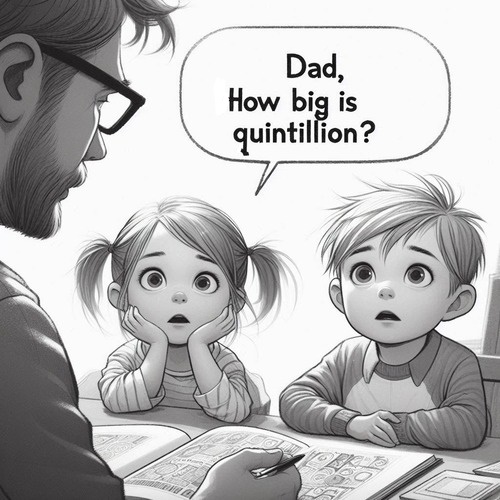Discovery of the Mt Ebal Curse Tablet: Where Things Stand
In 2019, a tiny lead tablet, no bigger than a postage stamp, emerged from discarded material at an archaeological site in Israel. This unassuming artefact quickly became one of the most debated discoveries in biblical archaeology. Dr Scott Stripling and his team claim they found the earliest proto-Hebrew inscription ever found, potentially dating to around 1200 BC. If authentic, it would provide tangible evidence connecting to biblical narratives about Mount Ebal. But significant questions remain, with prominent archaeologists challenging its interpretation. Let’s examine where things stand with this controversial discovery.
MT EBAL: THE MOUNTAIN OF CURSES
Rising 3,084 feet above sea level in northern Samaria near modern Nablus, Mt Ebal holds profound significance in the Bible. Deuteronomy 11:29 establishes its importance: “When the Lord your God has brought you into the land which you go to possess, you shall put the blessing on Mount Gerizim and the curse on Mount Ebal.” Later, in Deuteronomy 27:4-8, God commands the Israelites to build an altar on Mount Ebal upon entering the Promised Land.
According to Joshua 8:30-35, this command was fulfilled: “Joshua built an altar to the Lord God of Israel on Mount Ebal… And there, in the presence of the children of Israel, he wrote on the stones a copy of the law of Moses.” The passage describes a covenant ceremony where half the people stood before Mount Gerizim to pronounce blessings and half before Mount Ebal to pronounce curses.
This biblical context is crucial because in the 1980s, Israeli archaeologist Adam Zertal excavated what he identified as Joshua’s altar on Mount Ebal. It’s from the discarded material of these original excavations that Stripling’s team would make their remarkable find decades later.
THE DISCOVERY: FROM DEBRIS PILE TO WORLDWIDE ATTENTION
In December 2019, Stripling’s team was wet-sifting material from Zertal’s excavation dumps when they discovered a small, folded lead tablet measuring approximately 2×2 cm. Closer examination revealed something potentially extraordinary.
Unable to unfold the fragile artefact without destroying it, Stripling’s team employed advanced imaging technologies to see what lay inside. Working with scientists from the Academy of Sciences of the Czech Republic and later Antwerp University, they utilised CT scans, X-ray fluorescence, and 3D scanning to reveal what they believe is an ancient inscription.
In March 2022, Stripling announced their findings at a press conference in Houston, Texas. His team published their analysis in the peer-reviewed journal Heritage Science, claiming the tablet contained 40 letters of proto-alphabetic text dating to the Late Bronze Age (approximately 1200 BC)—making it potentially the oldest Hebrew inscription ever discovered in Israel.
STRIPLING’S CLAIMS: A BRONZE AGE CURSE TABLET
According to Stripling and epigrapher Pieter Gert van der Veen, the inscribed text follows formulaic curse language common in the ancient Near East. Their proposed decipherment includes the Hebrew name for God (YHW) and language paralleling Deuteronomy 27:15-26, where curses are pronounced on Mount Ebal.
Stripling suggests the artefact is a “defixio” or curse tablet—a type of inscription known throughout the ancient Mediterranean world where curses were written on thin metal sheets and then folded or rolled. The tablet’s location near what Zertal identified as Joshua’s altar adds weight to their interpretation, potentially providing archaeological evidence for the covenant ceremony described in Joshua 8.
The dating of the tablet to around 1200 BC would place it during the biblical period of the Judges, aligning with some scholarly timelines for the Israelite settlement of Canaan. If confirmed, this would represent the earliest attestation of the name of God in proto-Hebrew and could revolutionise our understanding of early Israelite literacy and religious practices.
SCHOLARLY OPPOSITION: SIGNIFICANT QUESTIONS REMAIN
Despite the excitement surrounding the discovery, prominent archaeologists and epigraphers have raised substantial concerns about Stripling’s claims.
Archaeological Concerns Professor Amihai Mazar, one of Israel’s leading archaeologists, questions the artefact’s archaeological context. Since the tablet was found in discarded material rather than in a controlled stratigraphic excavation, its precise dating and original context remain uncertain. Without this context, connecting it definitively to the biblical narratives becomes problematic.
Stripling counters the material came from a sealed Late Bronze Age context at Zertal’s excavation, and the tablet’s metallurgical composition matches Late Bronze Age technology.
Epigraphic Doubts Christopher Rollston, professor of Northwest Semitic languages at George Washington University, has expressed serious scepticism about the epigraphic claims. Rollston suggests what Stripling’s team interprets as letters may simply be random scratches or corrosion patterns on the lead. He argues the proposed readings require significant imagination and do not conform to established patterns of proto-Canaanite or early Hebrew script.
In response, Stripling points to multiple independent analyses by epigraphers who support their reading, including Gershon Galil of the University of Haifa, who agrees the inscription contains early Hebrew text.
Methodological Questions Professor Aren Maeir of Bar-Ilan University raises methodological concerns about how the findings were presented. He notes the press conference announcement preceded comprehensive peer review, and the original publication did not include enough detailed images for scholars to independently verify the claims.
Stripling responds that the full data set has been made available to qualified researchers and the publication in Heritage Science represents proper scientific protocol.
Metallurgical Analysis Dr Naama Yahalom-Mack, an archaeo-metallurgist from the Hebrew University of Jerusalem, questions whether the patterns observed might be explained by natural corrosion processes rather than intentional writing. Lead oxidises in particular patterns that can resemble intentional markings.
Stripling’s team argues the statistical distribution of the marks is inconsistent with random corrosion and that 3D imaging clearly distinguishes between corrosion and intentional markings.
RECENT DEVELOPMENTS: ONGOING ANALYSIS
In 2023, additional high-resolution scans were conducted at laboratories in Prague and Belgium, with Stripling claiming these new images further verify their initial reading. However, many scholars remain unconvinced, arguing the new data hasn’t adequately addressed their fundamental concerns.
The debate continues in academic journals and conferences, with both sides presenting increasingly detailed analyses. Stripling’s team has presented their findings at several academic conferences, and additional publications are reportedly forthcoming.
MT EBAL CURSE TABLET: IMPLICATIONS AND SIGNIFICANCE
What makes this tiny tablet so significant? If Stripling’s interpretation proves correct, it would provide archaeological evidence for:
- Literacy among Israelites centuries earlier than previously thought
- The use of the divine name (YHW) in the Late Bronze Age
- Religious practices aligning with biblical descriptions
- Historical support for the covenant ceremony at Mount Ebal
Even if the most ambitious claims aren’t fully validated, the tablet represents an important artefact from a crucial period in ancient Israelite history.
CONCLUSION: A CONTESTED DISCOVERY
The Mt Ebal Curse Tablet, discovered in 2019, remains a contested find. Stripling’s claims of a proto-Hebrew curse face strong scholarly pushback, yet the debate enriches our engagement with biblical history. Some of the world’s leading archaeologists remain sceptical, while others see groundbreaking potential in this tiny artefact.
Mount Ebal continues to captivate our imagination as a place of covenant and consequence in biblical tradition. Whether this particular tablet contains the words of an ancient curse or not, Ebal’s legacy points to God’s enduring faithfulness throughout history.
As archaeological techniques continue to advance and scholarly debate unfolds, the final verdict on the Mount Ebal Curse Tablet appears pending. But its story does provide a fascinating window into how archaeologists, epigraphers, and biblical scholars grapple with evidence at the intersection of faith and history.
MT EBAL CURSE TABLET: RELATED FAQs
What are curse tablets and what purposes did they serve in the ancient world? Curse tablets (defixiones) were thin sheets of metal (typically lead) inscribed with invocations in the ancient world to influence divine powers to act against specific individuals or situations. They served various purposes including calling divine judgement upon oath-breakers, invoking protection against enemies, seeking justice for perceived wrongs, or establishing boundaries with supernatural consequences for violation. In ancient Near Eastern covenant contexts, curse tablets often formalised agreements by invoking deities to enforce the terms through punishment of violators. Their folded or rolled format was believed to activate the curse and maintain its potency, representing a tangible manifestation of the binding power of sacred words.
- What does Deuteronomy 11:29 mean? How would putting the blessings on Mt Gerizim and curses on Mt Ebal practically help Israel? From a Reformed perspective, Deuteronomy 11:29 established a vivid physical reminder of covenant theology, with the two mountains embodying the consequences of either covenant faithfulness or disobedience. The geographical arrangement—with fertile Gerizim representing blessing and stark Ebal representing curse—provided Israel with a constant visual pedagogy of God’s sovereign covenant structure, teaching that divine favour flows from obedience while judgement follows rebellion. The ceremonial arrangement practically served Israel by making abstract theological concepts tangible and unavoidable in their daily lives, reinforcing God’s absolute sovereignty over their national destiny while emphasising their covenant responsibility. The Reformed understanding sees this not as mere religious symbolism but as God’s gracious provision of concrete reminders of His unchanging character and the serious nature of covenant relationship with Him.
- Which prominent scholars support Stripling’s interpretation of the Mt Ebal Curse Tablet? Professor Gershon Galil from the University of Haifa has supported Stripling’s reading, suggesting the inscription contains early Hebrew text with religious significance. Epigrapher Pieter Gert van der Veen has collaborated closely with Stripling and validated the proto-alphabetic nature of the inscription. Several researchers from the Academy of Sciences of the Czech Republic who conducted the imaging have also expressed support for the interpretation that the markings represent intentional writing rather than corrosion patterns.
How does the dating of this tablet potentially impact our understanding of the Exodus and Conquest narratives? If authenticated as dating to around 1200 BC, the tablet would align with the “late date” theory of the Exodus, placing these events in the 13th century BC. The timing would correspond with archaeological evidence of settlement changes in Canaan during this period, potentially connecting material culture with biblical chronology. The presence of Hebrew writing from this era could suggest the biblical accounts were recorded closer to the events they describe than many minimalist scholars currently believe, with significant implications for how we understand the historicity of these narratives.
- What technology was used to “read” the tablet without opening it, and how reliable is this method? The tablet was analysed using high-resolution CT scanning technology at the Academy of Sciences of the Czech Republic and later at Antwerp University, allowing researchers to visualise the interior surfaces without physically unfolding the fragile artefact. X-ray fluorescence spectroscopy was also employed to determine the tablet’s composition and detect trace elements. While these technologies are considered highly advanced and reliable for material analysis, the interpretation of patterns as intentional writing versus natural formations remains the central point of contention among scholars.
- Have other similar curse tablets been found in ancient Israel or surrounding regions? Numerous curse tablets (defixiones) have been discovered throughout the ancient Mediterranean world, particularly from Greek and Roman contexts dating from the 5th century BC to the 5th century AD. However, examples from the Late Bronze Age in the Levant are extremely rare, making the Mt Ebal tablet potentially unique if confirmed. A handful of Aramaic curse texts on bowls from the much later Babylonian period (4th-7th century AD) have been found, but these represent a different tradition and are significantly younger than what Stripling claims for the Ebal tablet.
If authentic, how would this discovery change our understanding of early Hebrew literacy? If confirmed as proto-Hebrew from circa 1200 BC, the tablet would push back the timeline of Hebrew writing by several centuries from what is currently accepted. This would suggest literacy existed among Israelites much earlier than previously thought, challenging theories that biblical texts couldn’t have been written until much later. The presence of sophisticated religious language and formulaic curse terminology would indicate that written religious practices were already developed during the settlement period, fundamentally altering our understanding of early Israelite cultural and religious development.
MT EBAL CURSE TABLET: OUR RELATED POSTS
Editor's Pick

GPS Without Eyes: How Ants Silently Shout Intelligent Design
Picture a leafcutter ant navigating the rainforest floor in pitch darkness, carrying a leaf fragment 50 times its body weight. [...]

Born Broken: Why Must We Affirm Original Sin?
Imagine a world where we’re born neutral—free to choose good, and without a bias toward evil. Sounds appealing… until we [...]

Does God Truly Care About My Everyday Choices?
OWe believe God created the universe. We believe He orchestrated the exodus from Egypt and raised Jesus from the dead. [...]
SUPPORT US:
Feel the Holy Spirit's gentle nudge to partner with us?
Donate Online:
Account Name: TRUTHS TO DIE FOR FOUNDATION
Account Number: 10243565459
Bank IFSC: IDFB0043391
Bank Name: IDFC FIRST BANK






